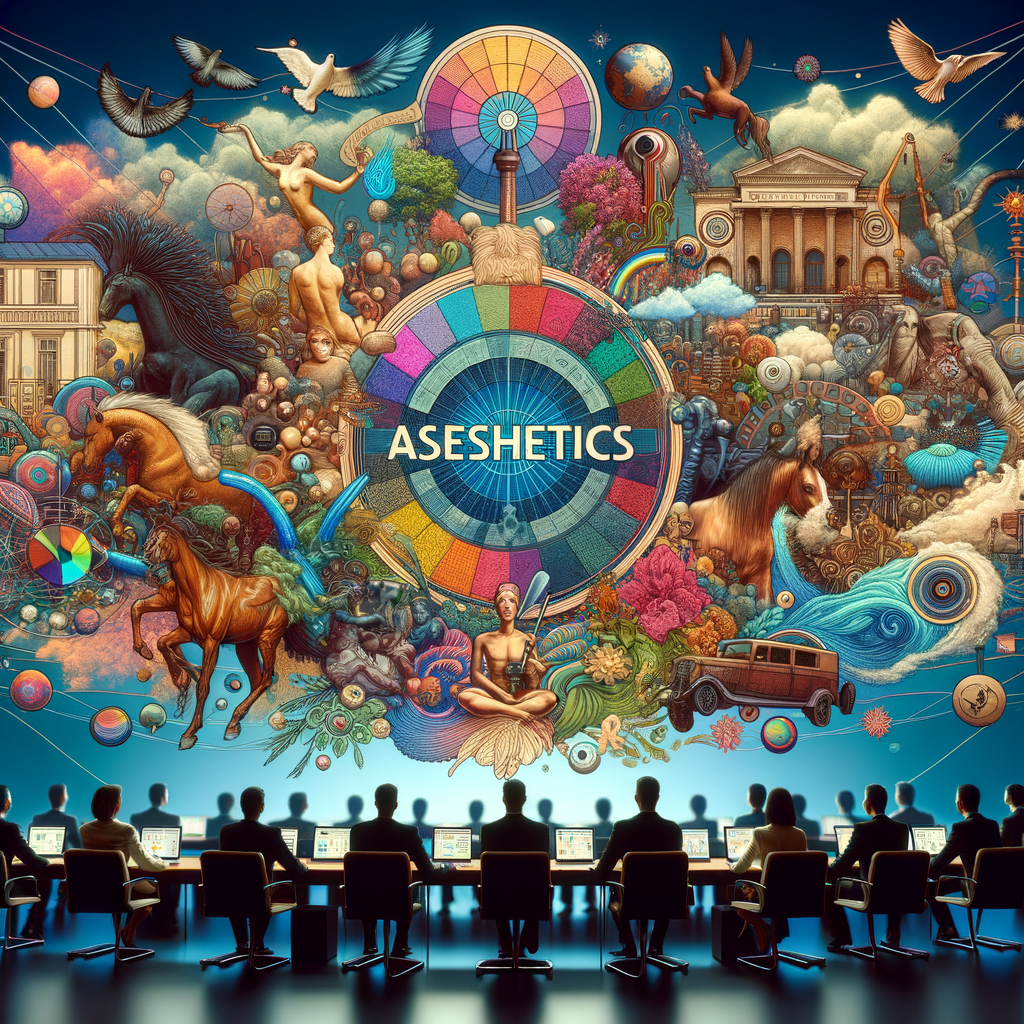Aesthetics are collections of visual schema that create a “mood.” They shape our perceptions, influence our emotions, and often define our cultural and subcultural identities. From internet-born trends to historically rooted styles, aesthetics encompass a broad spectrum of visual and sensory experiences. Let’s dive into some types of aesthetics and their origins, using one as a focal point to understand how they shape our world.
Types of Aesthetics
Internet Originated Aesthetics
Internet communities have birthed some of the most popular aesthetics, such as Cottagecore and Dark Academia. These styles often reflect an idealized version of life, whether it’s the rustic, pastoral charm of Cottagecore or the scholarly, moody undertones of Dark Academia.
National Cultures
Aesthetics can also be deeply rooted in national cultures. Examples include Americana, which embodies the essence of American history and folklore, and Traditional Polish, representing the rich heritage and customs of Poland. It’s essential to approach these aesthetics with sensitivity to avoid harmful stereotypes and ensure high-quality representations.
Genres of Fiction
Genres like Cyberpunk and Gothic have established visual tropes that define their aesthetic. Cyberpunk, for instance, is known for its futuristic, high-tech, low-life imagery, while Gothic aesthetics are characterized by dark, mysterious, and sometimes macabre visuals.
Holidays with Iconic Imagery and Colors
Certain aesthetics are tied to holidays, with Christmas and Halloween being prime examples. Christmas aesthetics feature vibrant reds and greens, sparkling lights, and cozy settings, whereas Halloween is dominated by eerie, spooky themes with orange and black color palettes.
Locations with Expected Activities
Aesthetics like Urbancore and Fanfare are tied to specific locations and their characteristic activities and atmospheres. Urbancore captures the bustling life of urban environments, while Fanfare might encapsulate the lively, colorful atmosphere of fairs and carnivals.
Music Genres
Music genres like City Pop and Emo have consistent visual motifs that appear in album covers, music videos, and fan art. City Pop, a genre from Japan, often features neon lights and cityscapes, while Emo is known for its dark, emotional, and expressive style.
Periods of History
Historical periods like the Victorian era and the Y2K aesthetic offer distinct visual styles. Victorian aesthetics are often elaborate and ornate, while Y2K captures the tech-optimism and futuristic designs of the late 1990s and early 2000s.
Stereotypes
Some aesthetics are based on stereotypes, such as Brocore and VSCO. These can be more controversial and should be handled thoughtfully to avoid perpetuating negative or harmful stereotypes.
Subcultures
Subcultures like Raver and Skinheads have their unique blend of music, fashion, and attitudes. Raver aesthetics are colorful and energetic, often reflecting the vibrant, electrifying atmosphere of rave parties.
Focus Aesthetic: 2020s E-Kid
One of the rapidly growing aesthetics is the 2020s E-Kid. This aesthetic is a fascinating blend of various influences, from internet culture to music and fashion trends. It encapsulates the digital-native generation’s rebellion and creativity.
Visual Schema of 2020s E-Kid
The E-Kid aesthetic is characterized by a mix of edgy and nostalgic elements. You’ll often see:
- Fashion: Oversized graphic tees, chain accessories, and dyed hair are staples. The look is a modern twist on 90s and early 2000s fashion, with a hint of punk and grunge influences.
- Colors: A monochrome base with pops of neon colors. Black is predominant, but it’s not unusual to see electric blues, pinks, and greens.
- Makeup: Bold eyeliner, often winged or smudged, and unique, sometimes extravagant, eyeshadow looks. Makeup is a form of artistic expression for E-Kids.
Origins and Influences
The E-Kid aesthetic has its roots in platforms like TikTok and Instagram, where young content creators and influencers showcase their distinct styles. It’s a mash-up of various subcultures, including emo, goth, and punk, with a heavy influence from the digital world.
Music and Media
Music plays a crucial role in the E-Kid aesthetic. Genres like Hyperpop and Emo Rap are particularly popular. Artists like Billie Eilish and Lil Peep have significantly influenced the soundscape and style choices within this aesthetic.
Why It Resonates
The 2020s E-Kid aesthetic resonates with many because it allows for a high degree of personal expression and creativity. It’s a way for individuals to distinguish themselves in a digital world that often feels overwhelmingly uniform.
Conclusion
Aesthetics are powerful tools for creating and expressing moods and identities. Whether they originate from internet communities, national cultures, fiction genres, or historical periods, they offer unique ways to experience and interpret the world. The 2020s E-Kid aesthetic is a prime example of how modern influences blend with nostalgic elements to create something entirely new and expressive.Exploring and understanding these various aesthetics not only enriches our visual and cultural literacy but also allows us to appreciate the diverse ways in which people find and create meaning in their surroundings. So next time you scroll through your feed or walk through a new neighborhood, take a moment to notice the aesthetics around you—they’re everywhere, subtly shaping our experiences and emotions.

Leave a Reply